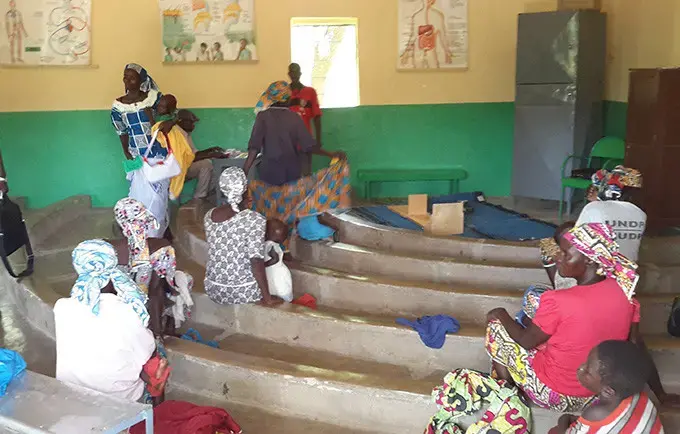UNITED NATIONS, New York, 18 November 2014—Developing countries with large youth populations could see their economies soar, provided they invest heavily in young people’s education and health and protect their rights, according to The State of World Population 2014, published today by UNFPA, the United Nations Population Fund.
The potential economic gains would be realized through a “demographic dividend,” which can occur when a county’s working age population is larger than the population that is dependent and younger, the report shows.
But to maximize the dividend, countries must ensure their young working-age populations are equipped to seize opportunities for jobs and other income-earning possibilities.
“Today’s record 1.8 billion young people present an enormous opportunity to transform the future,” says UNFPA Executive Director, Dr. Babatunde Osotimehim. “Young people are the innovators, creators, builders and leaders of the future. But they can transform the future only if they have skills, health, decision-making, and real choices in life,” he adds.
With the right policies and investments in human capital, countries can empower young people to drive economic and social development and boost per-capita incomes, the new UNFPA report states.
The UNFPA Executive Director urges countries in pursuit of a demographic dividend to ensure the gains result in growth that benefits everyone.
“It is too easy to talk about the demographic dividend in terms of money, savings and economic growth, which have so far excluded many,” Dr. Osotimehin says. “The demographic dividend must be harnessed to achieve inclusive growth and offer opportunities and well-being for all.”
In the 1950s and 1960s, several East Asian economies invested heavily in young people’s capabilities and in expanding their access to voluntary family planning, enabling individuals to start families later and have fewer children. The result was unprecedented economic growth. The Republic of Korea, for example, saw its per-capita gross domestic product grow about 2,200 per cent between 1950 and 2008.
Nine in ten of the world’s young people today live in less developed countries. Because of lagging social services, these countries face greater obstacles to leveraging the advantages that can result from engaging a youthful, productive workforce.
The UNFPA report shows that demographic shifts taking place in about 60 countries are opening a window for a demographic dividend. The size of the dividend depends largely on how those countries invest in young people to realize their full potential.
If sub-Saharan African countries repeated the East Asian experience by making the right investments in young people, enabling them to participate in decisions that affect their lives and adopting policies to bolster economic growth, the region as a whole could realize a demographic dividend amounting to as much as $500 billion a year, for 30 years.
A demographic dividend of this magnitude has the potential to lift hundreds of millions of people out of poverty and raise living standards and catapult economies forward, the report states. Critical youth investments needed to reap a demographic dividend are those that protect rights, including reproductive rights, improve health, including sexual and reproductive health, and provide skills and knowledge to build young people’s capabilities and agency. These investments can also accelerate fertility declines, which can in turn accelerate the demographic transition.
****
UNFPA works to deliver a world where every pregnancy is wanted, every childbirth is safe and
every young person’s potential is fulfilled.



